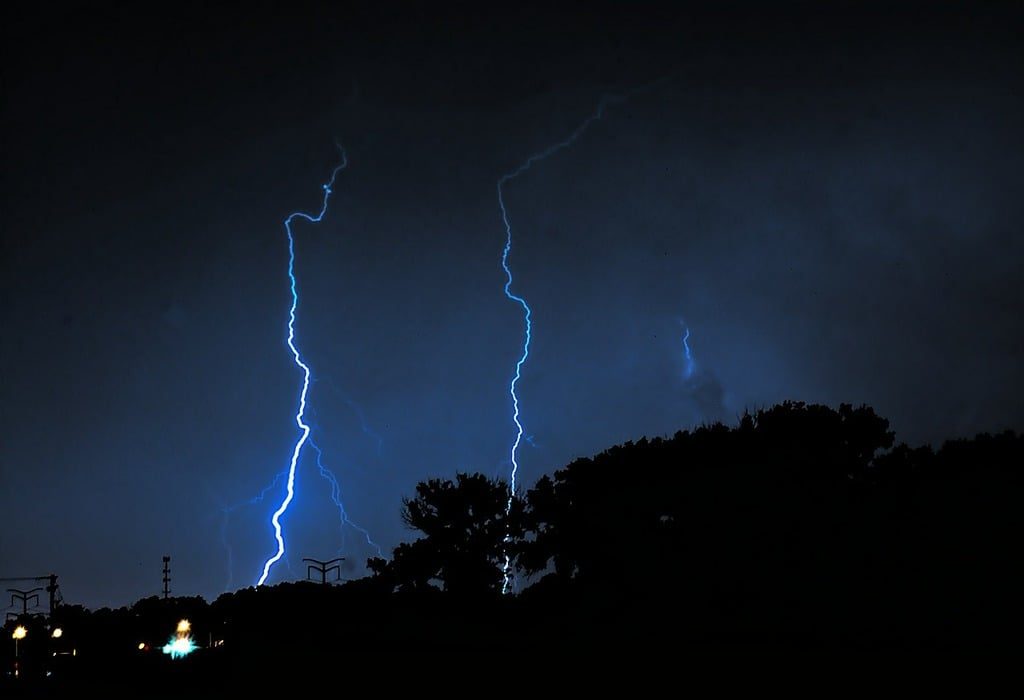- By Sydni
- Construction Blog
- 0 Comment
How Heavy Rainstorms Impact Homes in Arlington, Virginia
Option
Arlington, Virginia, has seen its fair share of heavy rainstorms recently. While the immediate effects of these storms can be obvious—flooded streets, soaked lawns, and drenched cars—the longer-term impact on homes, particularly on roofs, siding, and foundations, can be less apparent. Understanding the potential damage heavy rainstorms can cause is essential for homeowners in the area. Being aware of these common issues that arise after heavy rainstorms and offer tips on how to address them before they lead to more significant problems.
1. Roof Damage: The Silent Culprit
One of the most common issues homeowners face after a heavy rainstorm is roof leaks. Even a small leak can cause significant damage over time, leading to water-stained ceilings, mold growth, and even structural damage. In the Arlington area, where homes often endure intense downpours, it’s crucial to inspect your roof after a storm to catch any leaks early.
Asphalt shingles, commonly used in Arlington, Virginia, can suffer from granule loss after heavy rainstorms. The granules on shingles protect them from UV rays and extend their lifespan. When these granules are washed away by rain, your roof becomes more vulnerable to the elements, leading to accelerated wear and tear. Heavy rain can also cause gutters to overflow, particularly if they’re already filled with debris. Clogged gutters prevent water from draining properly, leading to water pooling on your roof or around your home’s foundation. This can cause leaks, foundation damage, and even basement flooding.
What to Do: After a heavy rainstorm, inspect your roof for any visible damage, including missing shingles, granule loss, or signs of water intrusion. It’s also essential to clear out your gutters and downspouts to ensure proper drainage. If you notice any issues, contact a professional roofing contractor for a thorough inspection and repairs.
2. Siding Issues: More Than Just a Facade
Heavy rain can penetrate siding, especially if it’s damaged or improperly installed. Water that seeps behind your siding can lead to mold growth, wood rot, and even structural damage. In Arlington’s humid climate, where rainstorms are common, this can quickly become a significant issue. 
Vinyl and wood siding are particularly susceptible to warping and buckling after prolonged exposure to moisture. Warped siding not only looks unsightly but can also create gaps where water can enter, leading to more severe damage over time. Moisture trapped behind siding can create the perfect environment for mold and mildew to thrive. Not only can this damage your home’s structure, but it can also pose health risks to you and your family.
What to Do: Inspect your siding after a heavy rainstorm for signs of warping, buckling, or water stains. Pay close attention to the areas around windows, doors, and other openings where water is most likely to seep in. If you notice any damage, it’s best to call a professional to assess the situation and make necessary repairs.
3. Foundation Problems: A Hidden Danger
Heavy rain can cause the soil around your home’s foundation to erode, leading to shifts and cracks in the foundation. This is particularly problematic in Arlington, Virginia, where homes are often built on clay-rich soil that expands and contracts with moisture levels. If your home has a basement, heavy rain can lead to flooding, especially if your foundation has cracks or if your gutters and downspouts are not functioning correctly. Water can seep into your basement, damaging belongings and creating a breeding ground for mold. Excess water can put pressure on your foundation, leading to cracks. These cracks can compromise the structural integrity of your home, leading to more severe problems down the road.
What to Do: Check your foundation for any visible cracks or signs of soil erosion after a heavy rainstorm. Ensure that your gutters and downspouts are directing water away from your home’s foundation. If you notice any issues, it’s crucial to consult with a professional to prevent further damage.
4. Interior Damage: Not Just an Exterior Problem
Even if your roof and siding seem intact, water can still find its way inside your home. After a heavy rainstorm, inspect your ceilings, walls, and attic for any signs of water stains or mold. Mold can start to grow within 24-48 hours of water exposure, so it’s essential to act quickly. As you may know, water and electricity don’t mix. If water has seeped into your home, it can create a dangerous situation if it comes into contact with electrical wiring. If you suspect any electrical damage, it’s crucial to contact a professional electrician immediately.
What to Do: After a heavy rainstorm, do a thorough inspection of your home’s interior, paying close attention to any areas that could have been exposed to water. If you find any signs of water intrusion, it’s best to consult with a professional to assess the damage and make necessary repairs.
![]()
Heavy rainstorms can wreak havoc on your home, especially in areas like Arlington, Virginia, where such weather events are common. From roof leaks and siding damage to foundation issues and interior water damage, the aftermath of a storm can be overwhelming. However, by taking proactive steps to inspect and repair any damage, you can protect your home from further harm.
Remember, if you’re unsure about the extent of the damage or how to address it, it’s always best to consult with a professional contractor. At Insured Roofs, we offer emergency roof repairs, free inspections, and a range of services to help homeowners in Arlington, Stafford, and the greater DMV area recover from the effects of heavy rainstorms. Don’t wait until it’s too late—protect your home and your investment by addressing storm damage as soon as possible.

